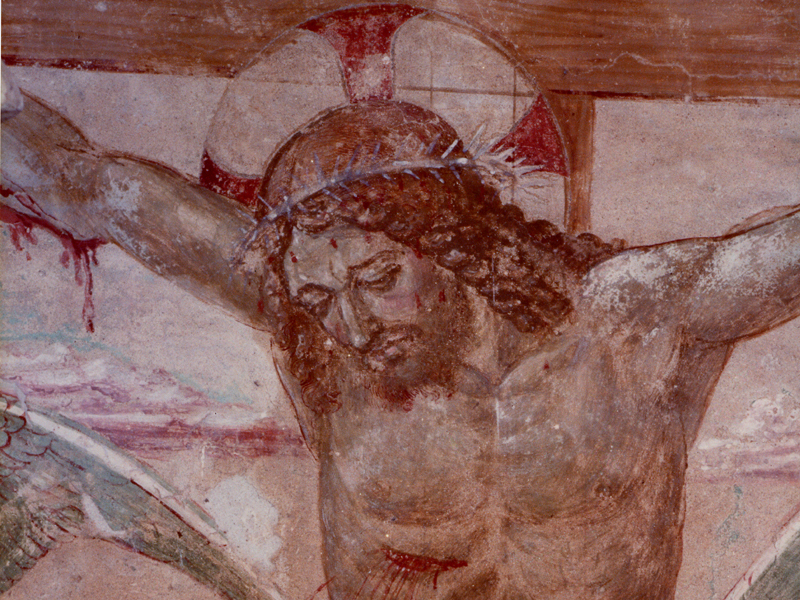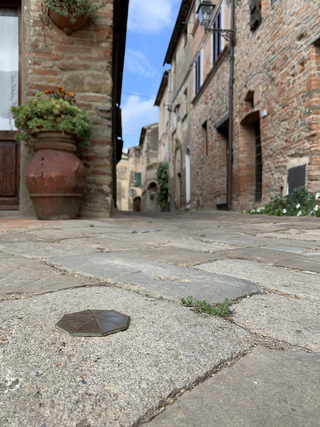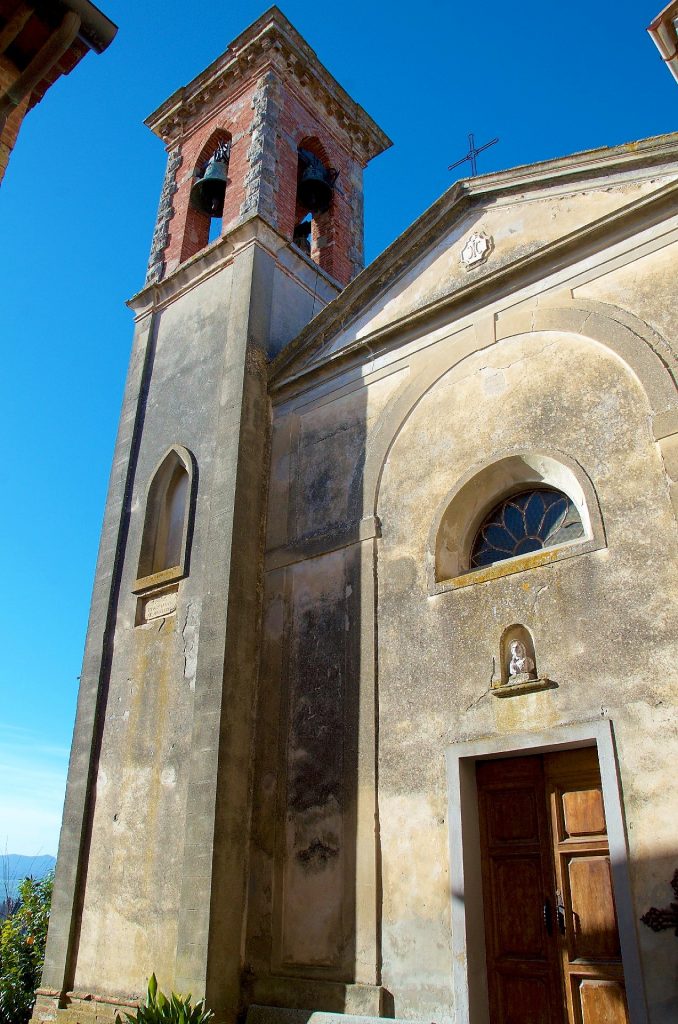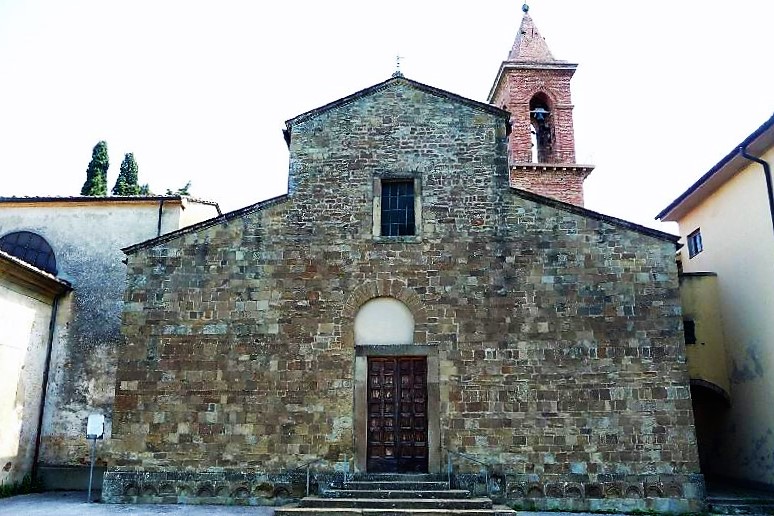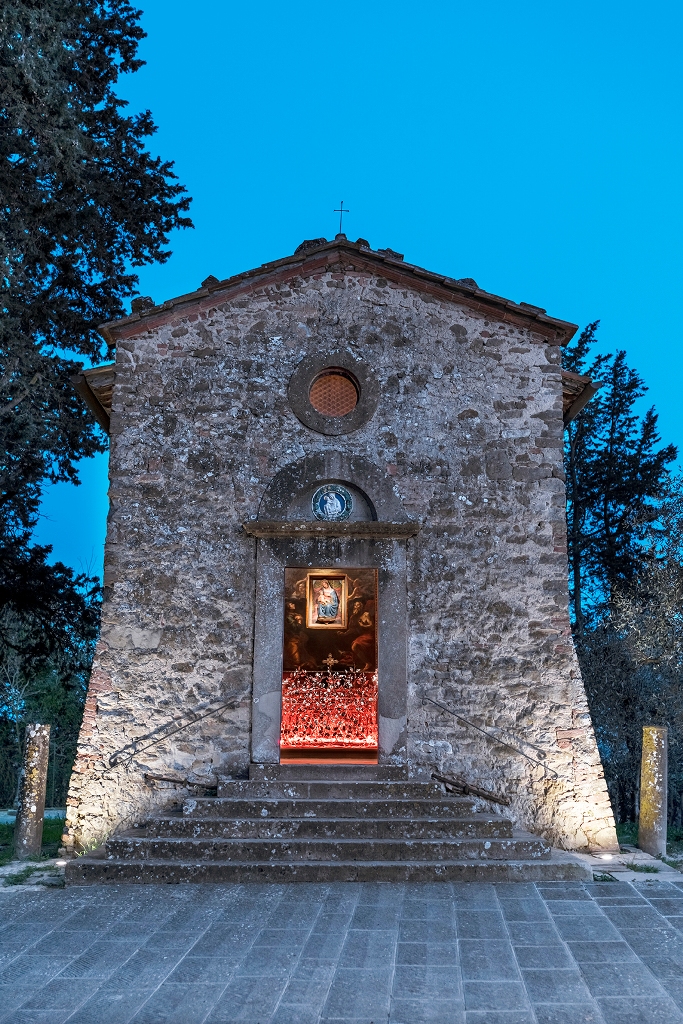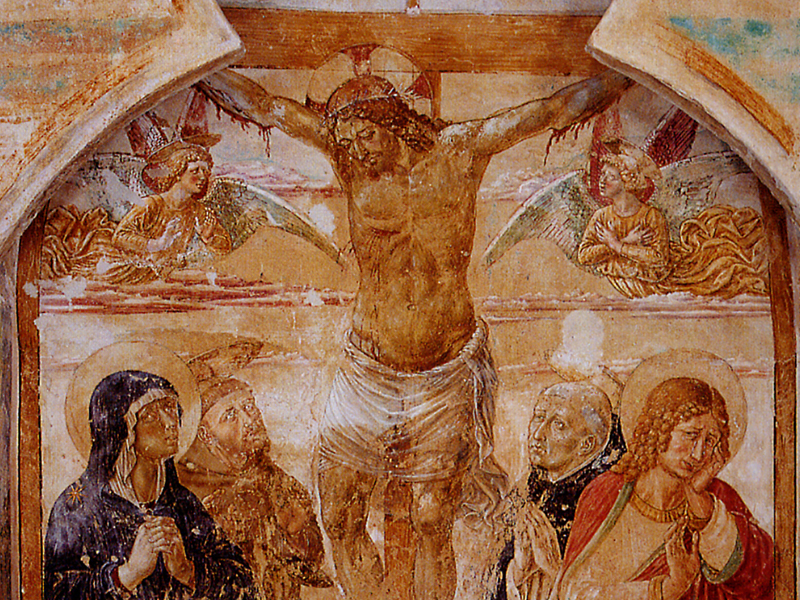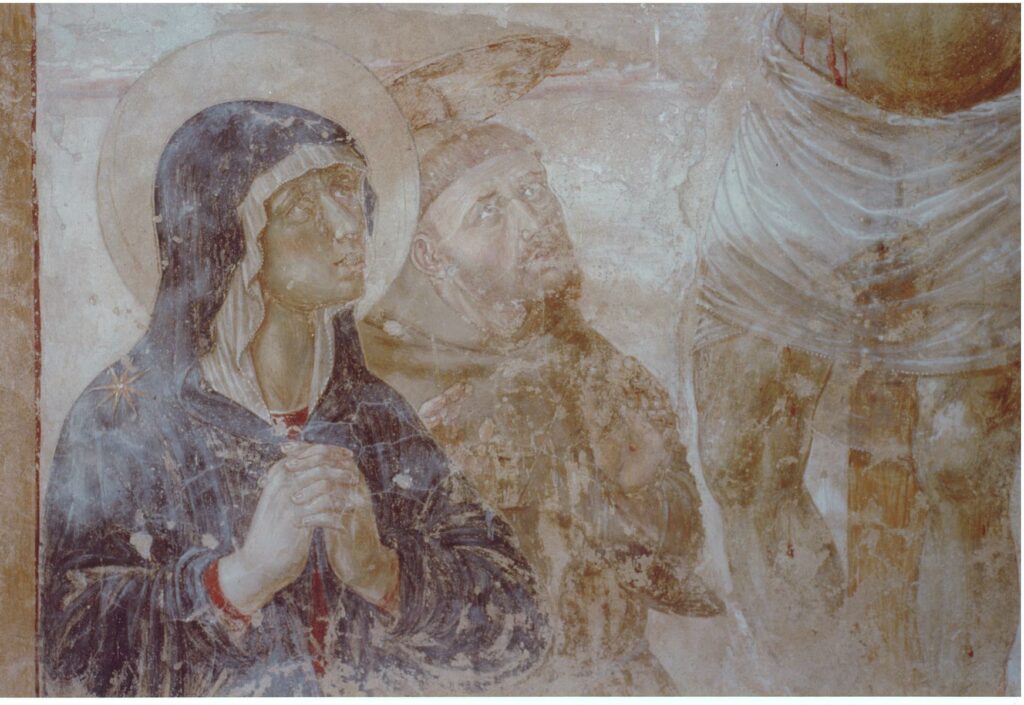We suggest this itinerary with a focus on the territory of Peccioli from a historical, cultural and theological point of view, including aspects of daily life that very often were intertwined, especially in the past.
In Peccioli you can find exhibitions of great interest, like the Museum of Sacred Art located in the Romanesque parish church of San Verano and the collection of icons from all over the Orthodox world; moreover, in the hamlets of Ghizzano, Montecchio and Fabbrica, some places of worship host both classic and contemporary artworks.
1st step – Peccioli
Parish Church of San Verano
Built between the end of the 11th and the beginning of the 12th century, it is dedicated to Verano from Cavaillon, a Provençal bishop of the 6th century, the patron saint of the town. The church features a façade with five blind arches in a Pisan-Romanesque style; inside are paintings by the 17th century Florentine painter Jacopo Vignali and a Madonna with Child and Saints by Neri di Bicci (1464); the interior hosts the Museum of Sacred Art, with the most significant works in the area, including a Madonna and Child from the first half of the 12th century by Enrico di Tedice and a reredos depicting St. Nicholas, made by Michele di Baldovino in the second half of the 13th century.
Museum of Sacred Art
Located in the parish church of San Verano, the museum preserves the most significant works of the area, including two well-preserved examples of Tuscan painting of the 13th century: a Madonna and Child dating back to the first half of the 12th century attributed to Enrico di Tedice, called “Our Lady of Grace” for the particular devotion it has always benefitted from in the area; a reredos with “St. Nicholas and stories of his life” of the third quarter of the 13th century, attributed to Michele di Baldovino.
“F. Bigazzi” collection and “Belvedere” collection
The “F. Bigazzi”collection, located inside Palazzo Pretorio, is made of predominantly Russian icons dating back to the 18th century, up to the early 20th century; they are typical of a domestic veneration and painted both in tempera, according to the traditional technique, and in oil, according to an “academic” methodology. The Belvedere collection, unique in its kind, consists of wooden icons with a singular and unusual peculiarity: dating back to the 18th century to the 20th century and coming from all over the Orthodox world. In December 2020, on the occasion of the 20th anniversary of the museum foundation, the collections were expanded by a Donation by Giuseppe and Paola Berger including crosses, icons and polyptychs (51 in bronze and 1 in bone), representative of much of the production of the Old Believers.
Church of Madonna del Carmine
The church was built in 1642 in bricks; it is surrounded on three sides by a loggia which today houses Azzurro, a luminous installation by Vittorio Corsini, visible from sunset. Inside, two plaques are placed in memory of the earthquake that in 1846 destroyed the church, totally restored four years later, as well as the whole Valdera.
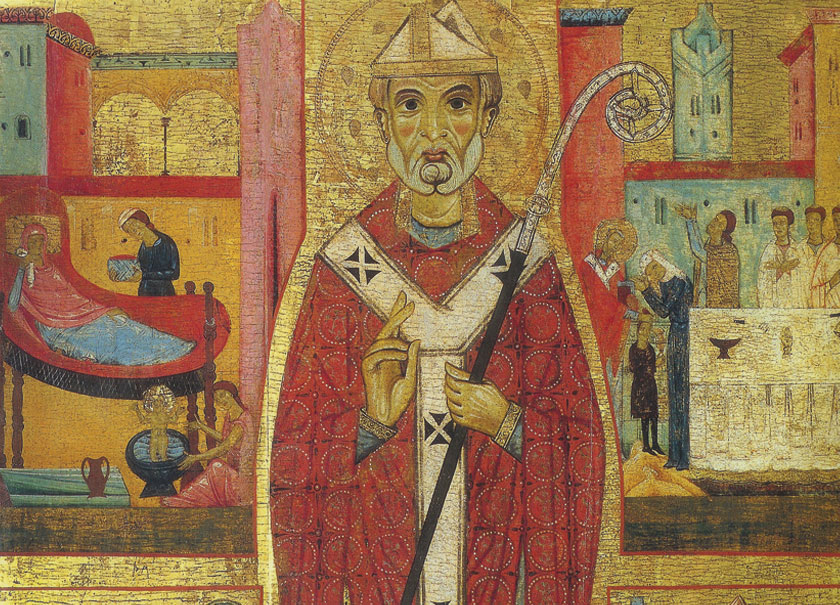
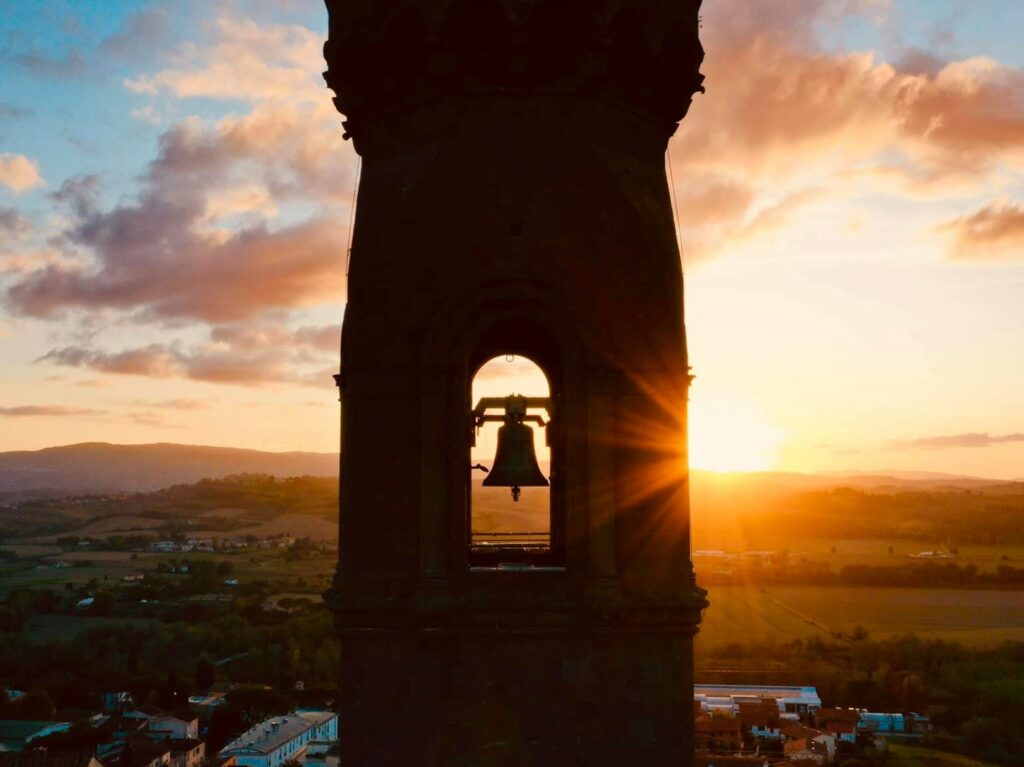
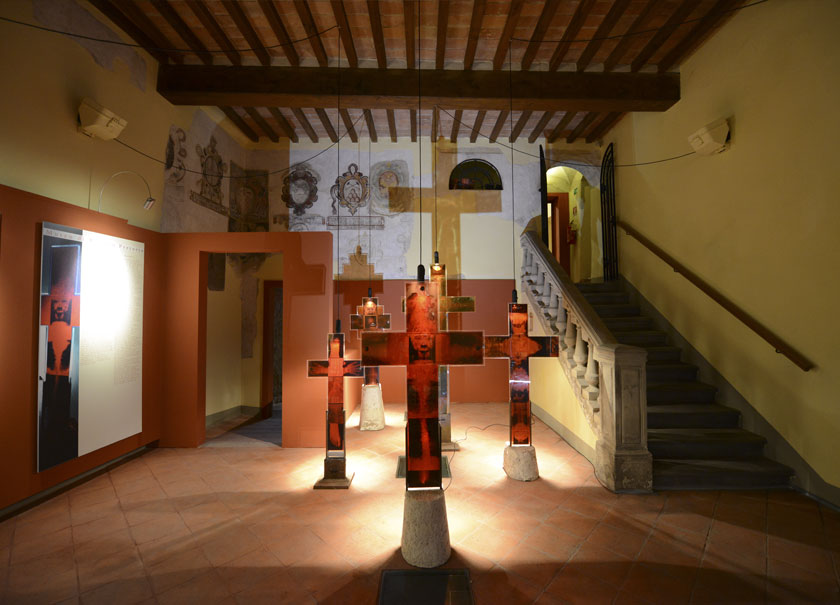
Museum Network
2nd step – Montecchio
The church in the hamlet of Montecchio, dedicated to St Lucia and St Pancrazio, locks the small village to the west side. Built in the Middle Ages together with a castle at the highest point of its bedrock, it has undergone various changes over the years until it assumed its current appearance in the 19th century. The very simple façade, coated by plaster, culminates in a tympanum. It was probably rebuilt in 1881 on the occasion of the reconstruction of its large bell tower, as we can see from a badge placed on the bell tower itself. In the internal dome of the church is a fresco of a dove, symbol of the Holy Spirit surrounded by rays of light.
In the street that leads to the church is the work by Umberto Cavenago “Rilievi”
3rd step – Fabbrica
In the hamlet of Fabbrica it is possible to visit the parish church of Santa Maria Assunta, a beautiful example of Romanesque architecture in the Valdera area. A parish church in Fabbrica is already mentioned in a document of 1017, but the current facility probably dates back to the 12th century. Since then, it got almost intact until now, despite interventions in 1405, in the 18th century and in 1832, which provided it with vaults, the squaring of its apse and elevation. Inside are three naves divided by alternating columns and pillars. It preserves valuable works of the school of Della Robbia.
In Fabbrica, in the central part of the small town, is the Chapel of Saints Rocco and Sebastiano, known both for its building structure and for a 15th century terracotta group depicting Madonna in the process of breastfeeding the Child, visible inside a frame that opens into a large canvas, enriched by a gilded and carved framework.
In the church is also Brumble Bush, one of the sound installations of the itinerary “Voci”, a project based on listening to stories that can only take place in a certain place and under certain conditions.
4th step – Ghizzano
There are two places to visit in Ghizzano: the Oratory of Santissima Annunziata and the Church of Saints Germano and Prospero.
The Oratory of the Santissima Annunziata, built in a Neo-Gothic style in the late 1800s and since 1996 a Marian Sanctuary, houses a 14th century Annunciation in carved and painted wood attributed to Tommaso Pisano. On the sides of the gate is the contemporary artwork Guests, by the Dutch artists Irene Fortuyn and Robert O’Brien. In the back garden of the oratory is a part of SolidSky, a work by Alicja Kwade.
The Church of Saints Germano and Prospero, dating back to the medieval period but heavily restored at the beginning of the 1800s, features painted and decorated internal vaults. At the entrance is the work Solid Sky by Alicja Kwede, part of a larger project that led artists such as David Tremlett, Patrick Tuttofuoco and Kwede herself to work in Ghizzano.
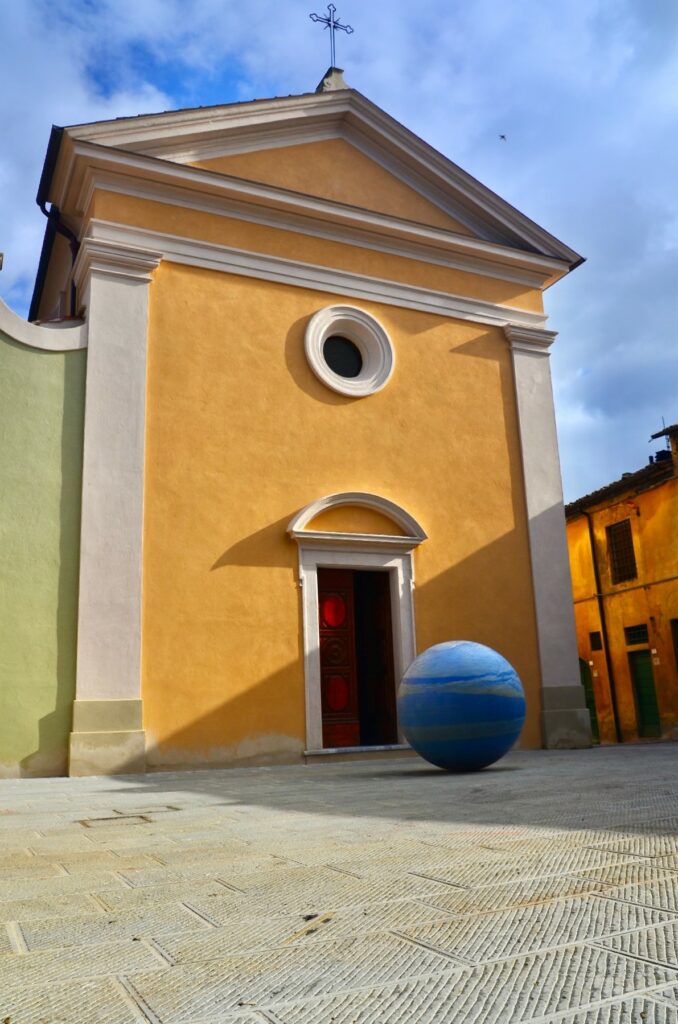
Alicjia Kweide – Solid Sky 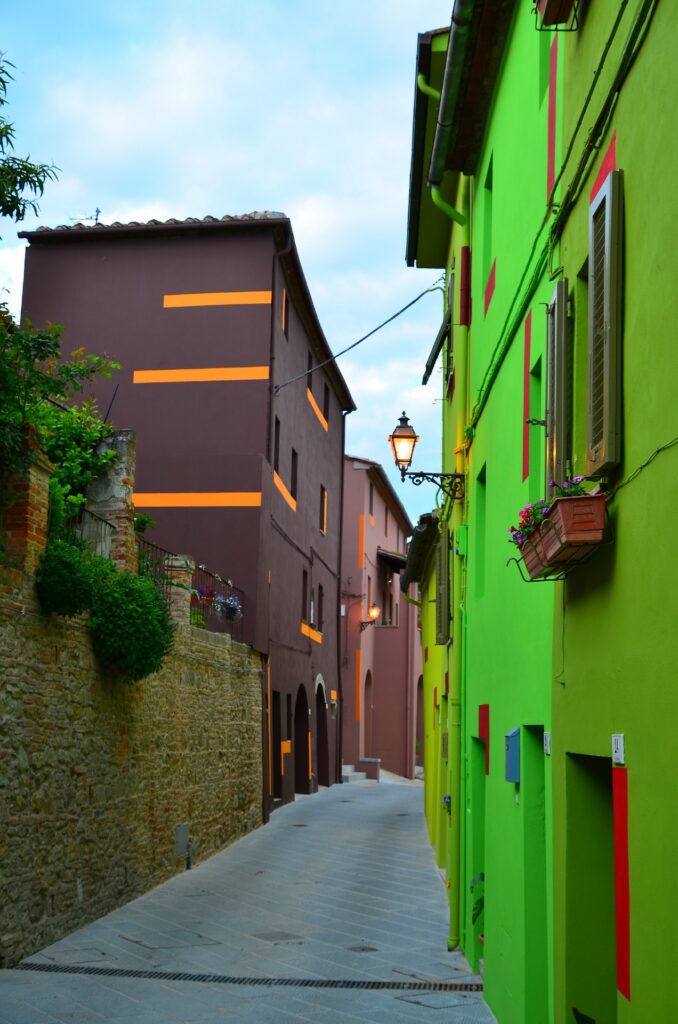
David Tremlett – Via di Mezzo 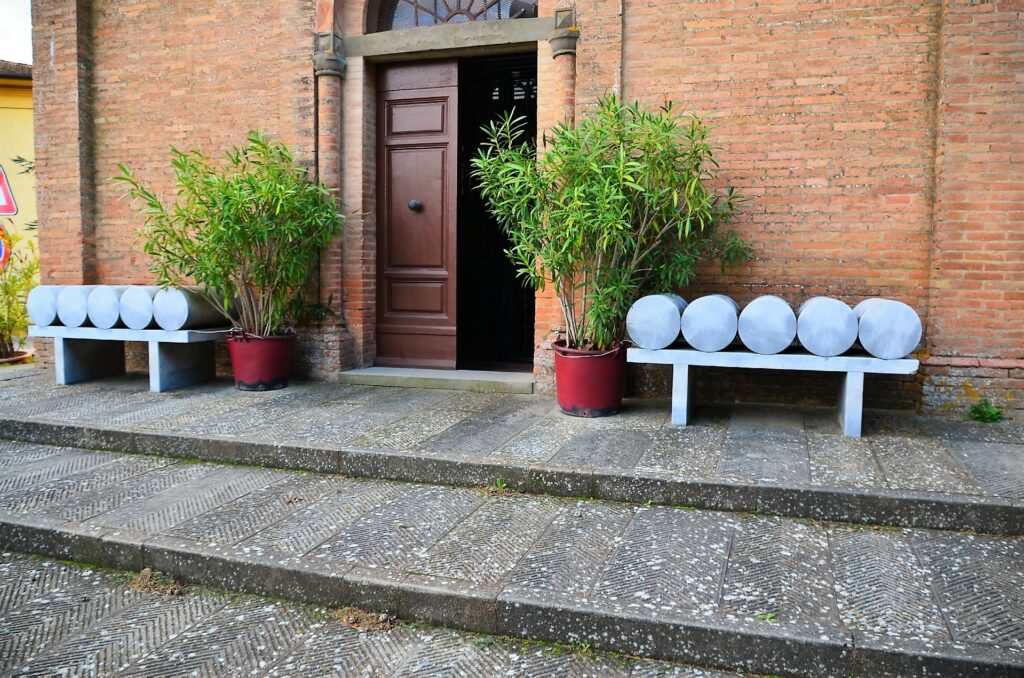
Ospiti – Fortuyn & O’Brien
5th step – Legoli
May 1479. The plague strikes in Pisa, where Benozzo Gozzoli, a Florentine and perhaps a disciple of Beato Angelico, is working on the Camposanto. It is necessary to seek refuge and Benozzo chooses Legoli, probably due to some agreements previously made with the community of this little town for the decoration of a monumental country tabernacle. As a matter of fact, here he is. The themes of death and suffering caused by the epidemic clearly emerge in the frescoes, especially in the heart-breaking representation of the Crucifixion of Christ with the Virgin and the Saints Francis, Dominic and John the Evangelist. Also intense are the scenes of the Martyrdom of St. Sebastian and the Incredulity of St. Thomas, where the apostle touches the wound in Jesus’ torso. The other frescoes depict the Annunciation, the Evangelists, the Fathers of the Church with a blessing Christ in the center, a Sacred Conversation with three angels holding curtains and a Christ carrying the cross on the background of a medieval town. The interventions in 1822 by Alessio del Fanteria, who built a funerary oratory around the tabernacle and dedicated it to Santa Caterina, make it appear today as a small chapel.
